Multiple Fragrances - An Oasis of Garden Aromas
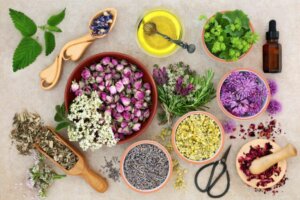
The multitude of fragrances you’ll enjoy in this type of garden will flood your senses. However, many fragrant herbs and plants are more than just decoration. Continue reading to find out more!
Herbs and fragrant plants are easy to grow and maintain. Depending on the size of the garden, you can dedicate the entire area to them or just a small part.
Herbs and some plants can be classified as fragrant, medicinal, or culinary, although many of them belong to all three. The common denominator of almost all is the fragrance they give off, especially their leaves.
Multiple fragrances in the garden – design and plants
The design of a fragrant herb garden can be formal (geometric) or informal (more natural), but regardless, it must harmonize with the herbs.
Typically, it’s common to use species resistant to harsh conditions, extreme temperatures, and that need little rainfall. So it’s useful to know how to choose them wisely.
Organize your fragrances
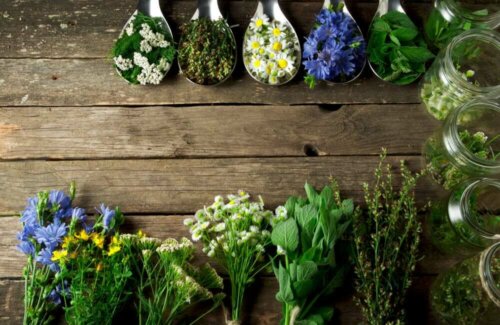
The arrangement of the herbs is very important. One of the great challenges is knowing how to enhance the fragrances of each plant without invading and neutralizing the smell of the others.
Most scents tend to be stronger in the warm hours of the day, but some herbs prefer the early morning to flood a garden with their fragrance.
Multiple fragrances in sections
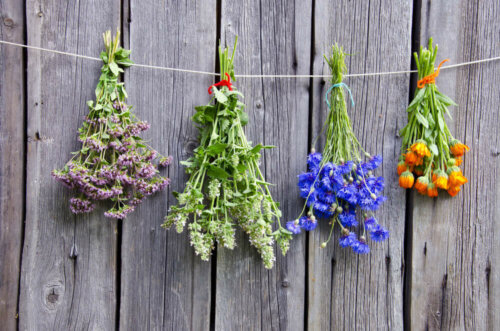
We recommend creating a garden in sections while taking into account the various types of aromas that exist; whether sour, bittersweet, intensely sweet, or mildly sweet.
This is because choosing your plants harmoniously to create the aromas you love.
In pots or planters
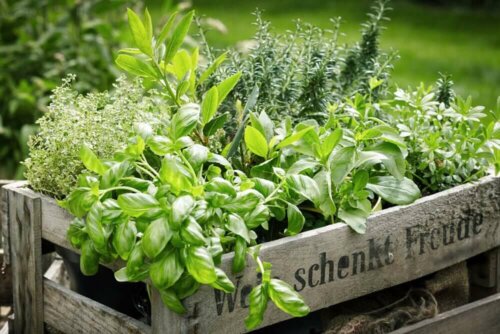
However, if you don’t want to make a thematic garden, or you have little space; then, opt for pots or planters. This is because aromatic, culinary, or medicinal plants also do well in them. But keep in mind that they’ll need more water and nutrients.
Circular arrangement in an aromatic garden
A good way to organize the garden is to plant the different varieties in a circle, especially if you want to create an aromatic plant corner. To do this, take the following steps:
- Firstly, draw a circle in the soil by placing a stick in the center and tracing the circumference with chalk and string
- Then, dig within that circle, about 8 inches deep, approximately, so the ground is leveled and conditioned
- Next, put a drain tube in and then place a row of bricks or stones inside the circle at the same height
- Then, separate some sections with stones and follow the same circumference
- Finally, plant the fragrant herbs and water them
Multiple fragrances, culinary, and medicinal
So, which herbs belong to each category? Take notes so you can choose your favorites.
Fragrant
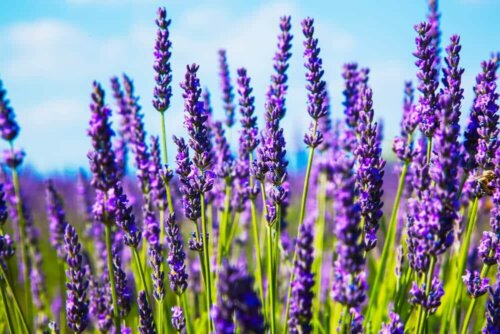
- Marigold has an orange-yellow flower
- Lavender has a sprig of purple flowers and gray leaves
- Tansy has a small yellow flower with a high stem
- Bergamot has a red, white, pink, or purple flower
- Rue has a lemon-yellow flower
- Wormwood has a grayish-green leaf and yellow flowers in clusters
- Chamomile has a white daisy-shaped flower
Culinary
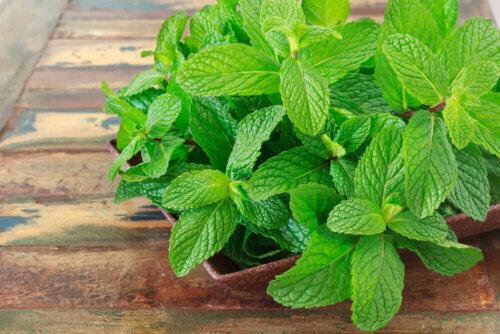
- Basil is green in color but sensitive to frost
- Mint requires a lot of moisture and shade or semi-shade
- Laurel grows very well in semi-shade
- Parsley should be planted away from direct sunlight
- Oregano requires full sun and tolerates frosts
- Peppermint grows better in semi-shade than in the full sun
- Rosemary needs full sun, little irrigation, and proper drainage
Medicinal

- Lemon balm has sedative properties
- Sage facilitates digestion when taken as an infusion
- Marjoram helps you sleep and helps digestion as an infusion
- Thyme, when infused, releases vapors that can relieve the symptoms of colds, and it also helps with digestive disorders
- Star anise facilitates digestion when infused and gets rid of intestinal gases
How would you like to plant any of these? You’ll love them, and regardless of the ones you choose your garden, pots, and planters will be truly lovely.
The multitude of fragrances you’ll enjoy in this type of garden will flood your senses. However, many fragrant herbs and plants are more than just decoration. Continue reading to find out more!
Herbs and fragrant plants are easy to grow and maintain. Depending on the size of the garden, you can dedicate the entire area to them or just a small part.
Herbs and some plants can be classified as fragrant, medicinal, or culinary, although many of them belong to all three. The common denominator of almost all is the fragrance they give off, especially their leaves.
Multiple fragrances in the garden – design and plants
The design of a fragrant herb garden can be formal (geometric) or informal (more natural), but regardless, it must harmonize with the herbs.
Typically, it’s common to use species resistant to harsh conditions, extreme temperatures, and that need little rainfall. So it’s useful to know how to choose them wisely.
Organize your fragrances

The arrangement of the herbs is very important. One of the great challenges is knowing how to enhance the fragrances of each plant without invading and neutralizing the smell of the others.
Most scents tend to be stronger in the warm hours of the day, but some herbs prefer the early morning to flood a garden with their fragrance.
Multiple fragrances in sections

We recommend creating a garden in sections while taking into account the various types of aromas that exist; whether sour, bittersweet, intensely sweet, or mildly sweet.
This is because choosing your plants harmoniously to create the aromas you love.
In pots or planters

However, if you don’t want to make a thematic garden, or you have little space; then, opt for pots or planters. This is because aromatic, culinary, or medicinal plants also do well in them. But keep in mind that they’ll need more water and nutrients.
Circular arrangement in an aromatic garden
A good way to organize the garden is to plant the different varieties in a circle, especially if you want to create an aromatic plant corner. To do this, take the following steps:
- Firstly, draw a circle in the soil by placing a stick in the center and tracing the circumference with chalk and string
- Then, dig within that circle, about 8 inches deep, approximately, so the ground is leveled and conditioned
- Next, put a drain tube in and then place a row of bricks or stones inside the circle at the same height
- Then, separate some sections with stones and follow the same circumference
- Finally, plant the fragrant herbs and water them
Multiple fragrances, culinary, and medicinal
So, which herbs belong to each category? Take notes so you can choose your favorites.
Fragrant

- Marigold has an orange-yellow flower
- Lavender has a sprig of purple flowers and gray leaves
- Tansy has a small yellow flower with a high stem
- Bergamot has a red, white, pink, or purple flower
- Rue has a lemon-yellow flower
- Wormwood has a grayish-green leaf and yellow flowers in clusters
- Chamomile has a white daisy-shaped flower
Culinary

- Basil is green in color but sensitive to frost
- Mint requires a lot of moisture and shade or semi-shade
- Laurel grows very well in semi-shade
- Parsley should be planted away from direct sunlight
- Oregano requires full sun and tolerates frosts
- Peppermint grows better in semi-shade than in the full sun
- Rosemary needs full sun, little irrigation, and proper drainage
Medicinal

- Lemon balm has sedative properties
- Sage facilitates digestion when taken as an infusion
- Marjoram helps you sleep and helps digestion as an infusion
- Thyme, when infused, releases vapors that can relieve the symptoms of colds, and it also helps with digestive disorders
- Star anise facilitates digestion when infused and gets rid of intestinal gases
How would you like to plant any of these? You’ll love them, and regardless of the ones you choose your garden, pots, and planters will be truly lovely.







